|
|
|
Early Summer Greetings to all readers,
Greetings,
If there was ever a quiet month in the sake industry, it is June. The tastings are over, rice is starting to grow, the rain begins to fall, and the weather heats up. The only activities at most kura (breweries) are pasteurization and bottling. But there is always plenty of sake to taste.
Be sure to look for the second issue of Sake Today as well as Sake Confidential, my new book! That, and enjoy a snapshot of this year's Japan Sake Awards, and my take on terroir in the sake world.
John Gauntner
~~~~~~~~~~~~~~~~~~~~~~~~~~~~~~~~~~~~~~~~~~~~~~~~~~~
Sake Today - the Magazine
Look for the Issue Number Two out 0n July 15! And, look for a subsciption service to be set up very soon.
Sake Today, the world's first English-language
printed sake-
only magazine - is now available!
The inaugural issue of Sake Today is still available, but the second issue will be published on July 15; reserve your copy now here. Like Issue #1, this issue will have something for everyone. New to sake? You will find Sake Today to be a very user friendly intro to the world of nihonshu. Been working with sake for a decade? Learn about the history of Nada from Haruo Matsuzaki, or sake luminaries of late from Atsuko Sando.
Beyond these we have articles on glassware, production, trends, and sake and food. There is something in Sake Today for any fan of sake.
We are not yet set up for subscriptions but order your copy today for 700 yen (about $7) here. Check it out!
~~~~~~~~~~~~~~~~~~~~~~~~~~~~~~~~~~~~~~~~~~~~~~~~~~~~~~~
Sake Confidential - "I have been released!"
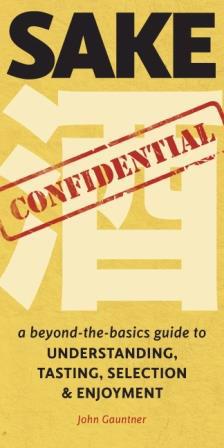 |
|
I am pleased to also announce that my next book - my sixth - is
now available. Sake Confidential is a beyond-the-basics guide to the sake world, and after a short introductory chapter on all things sake, it goes into depth on many topics not usually touched upon.
Sake Confidential is a practical and concise yet complete guide to sake idiosyncrasies, misperceptions, and controversies presented in a conversational and informal tone. Easy to read and frank, it also includes sake recommendations tied into each of the topics presented.
You can reserve yours here at Amazon. In the meantime, look for more concrete information about where to get it as soon as that becomes available.
Not sure if this is for you yet? Well, just read this review. Thanks to Richard Auffrey for that one. Or this one. Thanks to Domenic for that one.
|
|
Terroir in Sake
Does it even exist?
I have trouble finding one definition of terroir that more than a couple of people agree with. After scouring the bodies of wine knowledge out there (read: I poked around the internet for an hour) the ones that rang the most true were along the lines of “characteristics that are region or even parcel-of-land specific” or even more simply a “sense of somewhere,” or something that ties a wine to a very specific place. In other words, for any one or more of a myriad of reasons, the wine could not be exactly reproduced anywhere else.
The question of whether or not sake has terroir comes up with increasing frequency, with the main – and very valid – argument that it might not have true terroir stemming from the fact that the rice used in brewing can be brought in from regions far from the kura (brewery) itself. Heck, brewers from around the country brag about using Yamada Nishiki from Hyogo, even when they are half a country away from Hyogo. That’s a huge chink in the armor of any terroir or regionality argument.
There are those that say it is in the water. The argument goes that since the water cannot be moved, and since the water is tied to a parcel of land, then it is the water itself that defines the terroir of sake. And since sake is like 80 percent water in the end, the leverage is huge.
 |
|
But, in fact, water can indeed be brought in from a distance, and while not commonly done, it does happen. Furthermore, any parcel of land can have half a dozen water sources and types, depending on where and how deep the well is dug. Also, the water in any one place is really sourced in mountains far away, and it drifts underground for leagues upon leagues before arriving at one spot, and as such there are many places along the way with very similar sources of water. So while the water-is-sake’s-terroir argument is not totally unfounded, I cannot buy into it fully myself.
So, then, does sake have that sense of can-only-be-done-here and cannot-be-reproduced-anywhere known as terroir? And if so, from whence does it hail?
I espouse that it does, and that said terroir is found in none other than the kura itself.
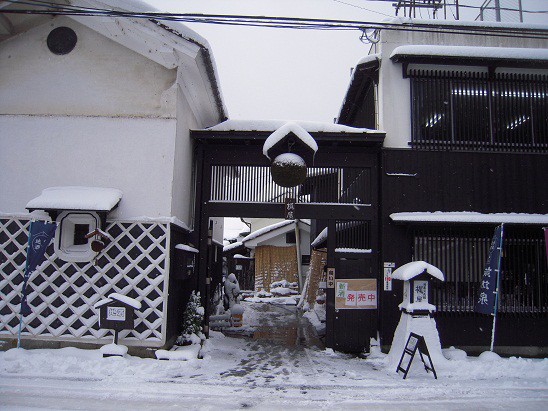 |
|
Yes, the kura is but a brewery building. At least on the surface. But integrated into that are the design elements of the toji, or the kuramoto (the brewery owner or business decision maker), and perhaps not even that of the present generation. But the layout/design they have, be it new or 400 years old, is what it is, and is unique in countless ways.
We need to expound on that a bit further, but also bear in mind that in my larger definition of kura here, I include the intention and personality of the toji and his or her supporting cast. Just how that crew works within the physical environment that constitutes the kura will be unique to that time and place, and be impossible to reproduce anywhere else.
We also need to include the nature of the kuramoto as well. Is the owner one who is willing to buy the best rice, in advance, and pay top yen to secure it, or instead string out the toji by pulling strings in the background to get decent rice at better prices. Both are valid approaches! And both will contribute to aspects of a kura that cannot be reproduced elsewhere, especially after having been factored into the overall permutation of things happening at a particular kura.
Also, when the kuramoto and the toji are the same person, or at least the same family, then one dynamic is eliminated. Or another becomes evident – depending on your viewpoint. (Half-full or half-empty?) As this is now the case for about a fourth of the industry, it is indeed a significant aspect of any conversation on sake terroir.
But back to the physical structure of the kura itself. To me, this is where a mark of indelible character is impressed upon what is brewed here. There are countless little things, the aggregate of which makes a given sake simply impossible to recreate anywhere else.
The task of trying to convey this is so daunting I shudder at the thought of where to begin. Let us start with size.
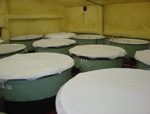 |
|
How big is the kura; what is its capacity? How many tanks? How big are the batches? Are they same size for cheap sake as they are for daiginjo? Do they have enough to start a tank a day, or just three a week, or perhaps only one a week? Do they have enough people to watch all of that closely or do they automate? What about temperature control? Is the kura in a cold or warm region? How thick are the walls?
Do they mill in house? How do they wash and soak their rice? How big is the koji room, f’gad’s sake? This is huge. Just how much they can make at one time, and what the attention to detail can be are massively leveraging.
Even little things like how far the koji room is from where they steam their rice is an issue. What about the foyer outside the koji room where they cool it down before adding it to a batch? How does that affect cooling and drying out the koji? Big, big, big in terms of effects on the sake!
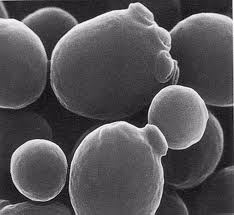 |
|
What about the yeast starter room? Big or small, refrigerated or not, tightly sealed off or more open? And what of the layout of the fermentation tanks? How do they press the sake? Do they have more than one apparatus that lets the sake tell them when to press it, or do they need to coax the sake to be ready so as to keep on a schedule? How do they do that pressing – with a new machine or an older, traditional one?
Note, none of these factors is unequivocally better than another. All are just different. All contribute to the final terroir of the sake made there.
How do they pasteurize as a rule? How do they store? Distance, pipes, pumps, filters – all of these things have their say in the end.
Then there is the unexplainable. Some yeasts work better in some kura than others. No one knows why. It just is that way. One tank might make consistently better sake than another, by virtue of what no one really knows.
 |
|
Remember that all this is before we even throw in the sake-making techniques themselves, or the skill and intention of the toji (brew master). What rice do they use, what yeast, how far do they mill, how good is their sanitation? What technical methods do they use for the yeast starter – normal, yamahai, kimoto or some variation unique to them?
This list could go on, and for a long time. But where it all leads is to the fact that in any one given kura, there will be a unique set of countless conditions that ensure that the sake made there cannot be reproduced anywhere else.
And therein lies the terroir of sake.
So yes, sake does indeed have terroir – a sense of place, a set of circumstances that ties a given sake to a single place, and it essentially cannot be reproduced anywhere else. And it’s in the
kura.
|
|
The 102nd Japan Sake Awards
Late last month, the 102nd running of what is officially known in English as
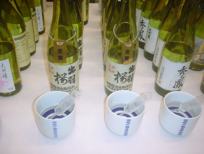 |
|
“The Annual Japan Sake Awards” was held. While I feel that the “National New Sake Tasting Competition” is much more accurately descriptive, nobody asked me. But I digress.
As most readers surely know, it is a national blind tasting of sake from most of the breweries in the country. It is prestigious if limited in its applicability to daily tippling. But it is fascinating and revealing of trends, technology, and individual skills. I have written about it almost every year, and so feel free to read about past contests, and different aspects of the completion, in the June issues of this newsletter over the past decade or so, all of which can be found in the archives.
This time, let us just take a perfunctory look at the contest this year. Although this was the 102nd running, the rules have changed from time to time, and apparently there are but 55 appraisals for which clear records exist, at least for contests run reasonably similar to the way they are today.
As a background, let us first look at the state of the sake brewing industry, in just as perfunctorily a way. There are 1818 brands of sake these days, made by 1563 sake breweries with licenses to brew, but of those only 1251 breweries are actively doing business (and less are actually brewing, but I digress again; let us save that for next time).
From amongst these, there were 845 entries this year. Each brewery is allowed one submission per brewing license (and a few do have more than one license). So, in the end, almost all will at least submit an entry. It’s has to be newly-brewed (not matured) sake, and it will almost always be a daiginjo.
So, 845 entries. Of those, there were 233 gold medals awarded for excellence. So, about a fourth. This is typical, I think.
The brewery that has won the most golds over the years is Saura Co., making the sake Urakasumi of Miyagi Prefecture. Next is Miyasaka Jozo, making the sake Masumi, from Nagano Prefecture.
The longest streak of golds is held by Saito Shuzo, brewers of Eikun sake, at 14 gold medals in a row. The current active streak is a tie, shared by
Takashimizu of Akita and Koganezawa of Miyagi. Both extended that streak to 11 this year.
All are wonderful accomplishments and a part of the long and rich history of this contest, and its significance to the sake industry.
On another interesting but unrelated note, for the first time, the production of junmai-shu passed up that of honjozo this past year. Wow. That is indeed significant as it shows how more consumers are leaning toward higher quality sake.
|
 Announcements and Events Announcements and Events
Sake Professional Course in the US
August, 2014
Amazingly, this course has all but filled up via word of mouth alone. There are but 2 (two!) seats remaining open!
The next Sake Professional Course will be held in Chicago Ill in
August, specifically, August 12 - 14 at the restaurant Sunda in Chicago. If you are interested in attending, by all means please contact me by email. The next one is tentatively scheduled for November in San Francisco.
The Sake Professional Course will of course include certification testing for the Sake Education Council-backed Certified Sake Professional exam.
~~~~~~~~~~~~~~~~~~~~
Sake Education Council Website
Please take a moment to check out the website for the Sake Education Council, the organization behind the Certified Sake Professional and Advanced Sake Professional certifications. We plan to grow steadily, strongly and continually, and we will need the support of all those that love sake to do so. Follow us through the "usual suspects" of social media.
Don't forget the archives!
Older editions of this newsletter are archived here.
Really old editions are archived here.
|
 Sake Education Central Sake Education Central
Sake's Hidden Stories and The Sake Notebook are now available for the Kindle, Nook and iBooks!
The Sake Notebook is now available for the Kindle as well as the Nook. And now, it is available for iBooks on iTunes as well!
Sake's Hidden Stories too is now availabe on the Kindle as well as the Nook. And now, it is available for iBooks on iTunes as well!
Both are
less expensive than their original pdf version too. Now is your chance to learn more about sake from your phone or tablet! Check 'em out!
Sake Dictionary App for the iPhone, iPod and iPad
"For 99 cents, this app ROCKS!!"
-a satisfied customer
There you are, perusing a menu, or standing in front of a shelf of great sake, or perhaps reading a sake newsletter… and up pops one of those hairy, pesky sake terms in Japanese. You know you have heard it many times, but dammit, you just cannot remember what it means now…
No problem! Just whip out your iPhone or iPod and fire up your trusty old version of
The Sake Dictionary. In a matter of seconds, you’ll be amongst the cognoscenti once again. But… if only you could pronounce it properly. Now that would really rock!
Done! Just tap on the term and you will hear a clear example of how to pronounce the term in Japanese. Repeat it a couple of times and the term is yours for eternity, to toss about and impress your mates.
What’s more, it’s
less!
Less than what it cost before, much less. Like less than one-seventh less. For a limited time only, the audio-enhanced version of The Sake Dictionary iPhone app is available for a mere $0.99.
|
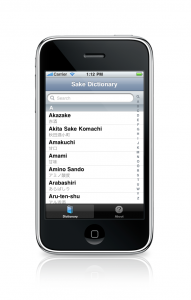 |
|
|
The Sake Dictionary is a concise little package of all the terms you might ever come across when dealing with sake. Almost 200 of them - including sake grades, rice variety names, seasonal sake terms, special varieties, rare types, post-brewing processing words and the myriad terms used in sake production - many of which are not even familiar to the average Japanese person on the street - are listed up here with concise, useful and clear definitions and the written Japanese version as well. And now, with the new audio component, you can listen and learn just how to pronounce those terms properly.
Start to toss around Japanese sake terms like you were raised knowing them! Gain a level of familiarity hitherto unimaginable! Avoid frustrating paralysis when faced with a sake-related purchase!
Get your copy of The Sake Dictionary now and never be confused by sake terms - or how to pronounce them - again.
Get it here: http://itunes.com/apps/sakedictionary
(Note if you have already purchased it, this upgrade to the audio version is free. Just go to iTunes and get it!)
|
Are you not getting this newsletter? I realize that is like asking that
"those not present please raise your hand," but for future reference, should you spontaneously stop receiving this newsletter, please go here and sign up again. Should that not work, please go to www.sake-world.com.
Email newsletter services are very careful not to be considered spam enablers, but the problem is that often very valid email addresses come back bounced as invalid. It is an unavoidable problem. So if you or someone you know is not getting this, or stop(s) receiving it inexplicably, please do take a moment to double check that you are still subscribed.
Sincere apologies for the hassle, mixed with gratitude for reading this newsletter. |
I hope you have found the above information helpful and entertaining. For more information about all things sake, please check out www.sake-world.com. Until next month, warm regards, and enjoy your sake.
Questions and comments should be directed to John Gauntner, at this
email address.
All material Copyright, John Gauntner & Sake World Inc.
Regards,
John Gauntner
Sake World, Inc
 . . 
|
|
